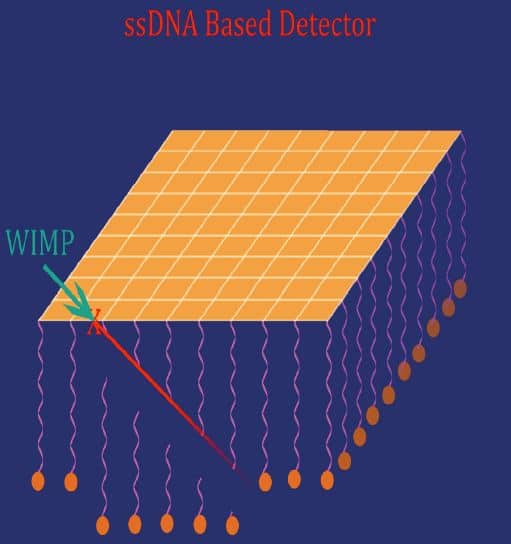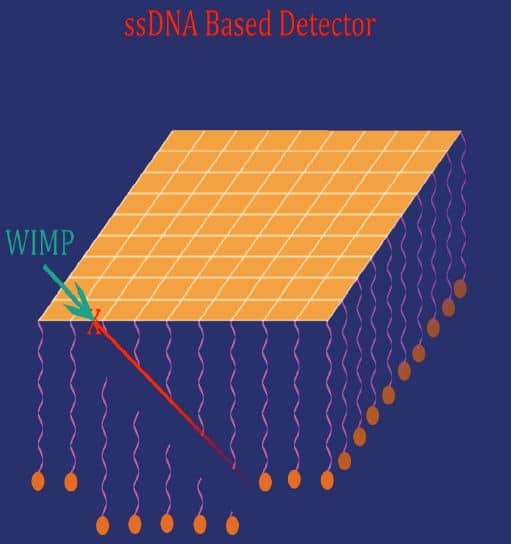
Nanotechnology is about exploring and implementing the ultimate methods for arranging the atoms in the world around us to suit our purposes. But atoms and all forms of visible matter make up only 4% of the universe, the remainder being dark matter and dark energy. In honor of today’s announcement of the discovery of a Higgs-like scalar boson (reported, for example, here), which may lead to new, deeper understanding of the rest of the universe, I cannot resist pointing to this new nanotechnology-based device that may prove useful in detecting dark matter. From KurzweilAI.net “Revolutionary ‘DNA tracking chamber’ could detect dark matter“:
Physicists and biologists plan to build a dark matter detector out of DNA that will outperform anything available today, Technology Review Physics arXiv Blog reports.
Current experiments to find dark matter are looking for the unique signature that dark matter is thought to produce as a result of the Earth’s passage around the Sun.
During one half of the year, the dark matter forms headwind as the Earth ploughs into it; for the other half of the year, it forms a tailwind.
There’s a straightforward way to make better observations that should solve this conundrum. The dark matter signal should vary, not just over the course of a year, but throughout the day as the Earth rotates.
The dark matter headwind should be coming from the direction of Cygnus, so a suitable detector should see the direction change as the Earth rotates each day.
However: nobody has built a directional dark matter detector.
A collaboration of physicists and biologists brings together diverse people, such as astrophysicist Katherine Freese at the University of Michigan in Ann Arbor and George Church at Harvard University in Cambridge, a geneticist and a pioneer in the area of genome sequencing, who say they can use DNA to spot dark matter particles.
Their detector consists of a thin gold sheet with many strands of single-strand DNA hanging from it. The idea is that a dark matter particle smashes into a heavy gold nucleus in the sheet, sending it careering out of the gold foil and through the DNA forest. The gold nucleus then severs DNA strands as it travels, cutting a swathe through the forest.
These strands fall onto a collecting tray below, which is removed every hour or so. The segments can then be copied many times using a polymerase chain reaction, thereby amplifying the signal a billion times over.
Since the sequence and location of each strand is known, it is straightforward to work out where it was cut, which allows the passage of the gold particle to be reconstructed with nanometer precision. The entire detector consists of hundreds or thousands of these sheets sandwiched between mylar sheets. …
The goes on to describe several advantages of this detector. Additional details as well as some cautions are available in the original article at Technology Review Physics arXiv Blog “Revolutionary ‘DNA Tracking Chamber’ Could Detect Dark Matter“. The research paper is freely available at arxiv.org “New dark matter detectors using DNA for nanometer tracking“.
—James Lewis, PhD
